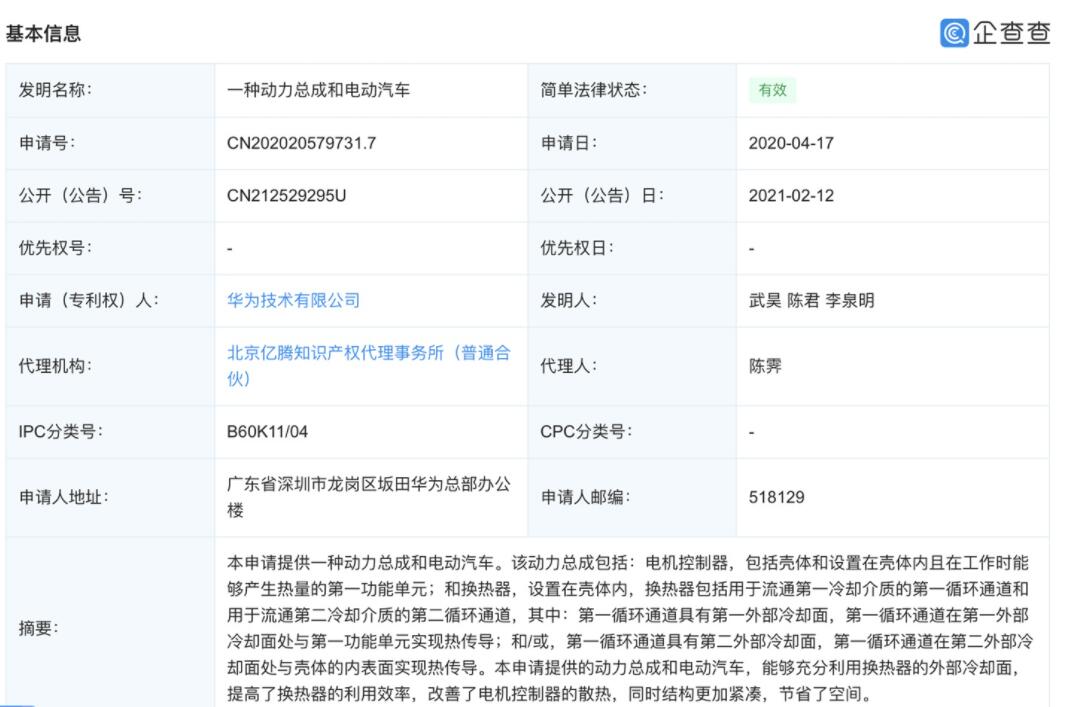Chinese technology giant Huawei disclosed a patent for "a powertrain and electric vehicle" on February 12, according to data provider Qichacha.
The patent enables the use of the heat exchanger's external cooling surface to improve the efficiency of the heat exchanger and save space by improving the heat dissipation of the motor controller while making it more compact.
Huawei's cell phone business suffered a setback in 2020 and subsequently set its sights more on the automotive sector. But Huawei's rotating chairman, Xu Zhijun, said in April 2019 that the company does not build cars, but will help car companies build better cars.
In November 2020, Huawei merged its enterprise-oriented automotive business with its consumer-oriented businesses such as cell phones, a document back then showed.
Instead of building whole cars, Huawei will help car companies build cars through Information and Communications Technology and become a provider of incremental components for smart connected cars, the document said.
In April last year, Huawei entered the in-car system space with the release of its HiCar system.
The system allows users to map cell phone content directly onto the car's screen, using cell phone computing power to provide users with an excellent in-car connected experience when the car's computing power has not yet reached a perfect level.
In addition, the system is also able to achieve navigation, in-car voice control, car phone key, and many other functions.
At the end of last year, Richard Yu, then president of Huawei's consumer business, said that Huawei has reached cooperation with more than 20 manufacturers on the HiCar system.
Huawei also released an in-car smart screen at the end of last year priced at RMB 1,699 ($263), allowing car owners with older models to enjoy the convenience of intelligence.

